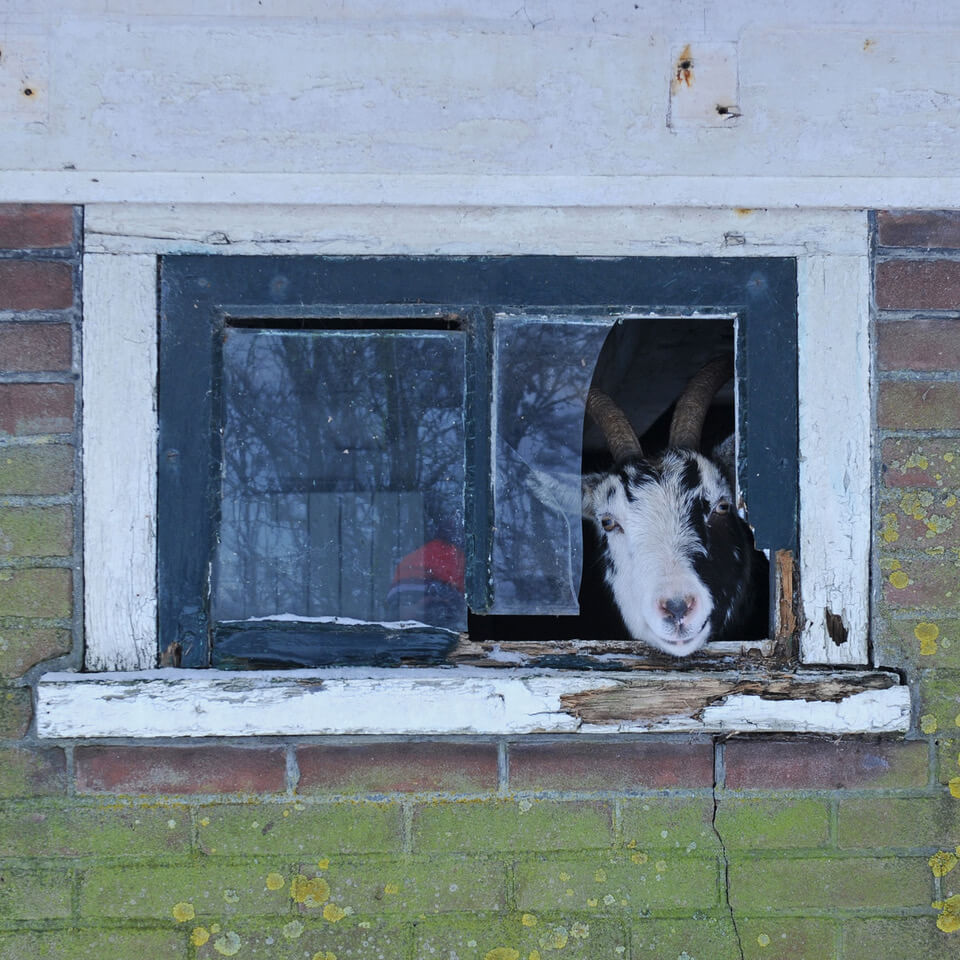‘Fire in Tulips’
“Call the fire brigade,” tends to be my silly answer when someone asks me what can be done about this fire. But in all seriousness, this is a big problem this year for everyone’s Tulips. In this newsletter, I will try to explain how you can prevent this in your own garden as much as possible.

‘Fire damage’ to a Tulip flower
The patches you can see in the Tulip above are caused by a fungus called ‘Botrytis tulipae’. When the circumstances are ideal, this fungus can attach itself to basically anything. It doesn’t come with the flower bulbs: when your Tulips are affected by this, it does not mean that you planted the wrong bulbs and/or could have told from the bulb that this would happen.
The fungus’ ideal circumstances are a moist environment, or a high humidity level and warmer temperatures. A long-lasting, moist environment is paradise for any fungus, and if the temperature is nice and warm at the same time, fungi can really live their best lives.

These dark grey, oval shapes are the sclerotinia of the Botrytis fungus. These parts get left behind in the soil when the Tulip has died.
The thing is that the chances of seeing the fire in your tulips goes up significantly when the circumstances for fungi get better. Tulip leftovers that were left behind in the soil and on the ground will be affected by the Botrytis, and the fungus stays ‘alive’ thanks to the sclerotinia it produces. Then when you plant the new Tulips in that same soil, the sclerotinia are still there, because that is how this fungus survives. Then, they will affect your garden again. But that does not directly mean that your Tulips will be sick. If, during the growing period of the Tulips, the weather was dry and nice, the fungus has not had the chance to spread around too much and infect surrounding leafs and plants. Then, a few Tulips might be infected, but not too many, and it won’t be too obvious.

Fire spots on a Tulip leaf
But if circumstances are the same as this Spring’s, with lots of rain and therefore very moist, the fungus can really travel around. Many of your Tulips will then be infected by it and will show signs on their flowers later on. The first signs are small, watery, dark-green spots on the leafs of the Tulips. That is not too bad yet, as it still means that if the weather changes back to dry, this will be all that is affected. But if the rain continues, the fungus will grow into large, brown spots that are not only on the Tulip’s leaf, but also on their flowers. It can be so bad that Tulips can be taken down entirely in just a week’s time.

A Tulip that comes up already heavily infected
Usually, you see the first symptoms in one specific place in your garden. If you notice this, the best thing is to look if there is another heavily infected Tulip in the surrounding area, and take that one out entirely. Sometimes, you see a Tulip that comes up already infected by fungus. We call that one the instigator. That one has been invaded by the fungus below ground and it’s too sick to save. If you remove that Tulip in its entirety, the fungus is already less likely to spread around in a large area. Leafs that have been infected on other plants should be removed as well, every bit of fungus removed makes it less easy for it to spread around widely. But to be fair: if the humidity remains high, the fungus will stay alive, and it will be very hard to get enough of the affected flower parts out to really contain the infection.

When the weather remains wet, flowers can be heavily affected
If the fungus is extremely proliferative and you want to protect your flowers as well as possible, which is understandable when it comes to large areas of your garden, the best thing you can do is employ a pesticide. I’m not entirely sure which ones are available right now, it depends on regulations where you live. The easiest thing you can do is probably to call a local gardener or garden supply shop and ask them what they have in use to reduce fungus in your garden. When the weather is extremely wet, growers also have to employ pesticides for this goal, and depending on the severity a choice has to be made for biological measures or soft chemical ones if nothing else can be done.

Fire patterns in a Tulip flower
If you have had Tulips with fire in them in your garden, make sure that when you remove them, you remove every bit of the flower from the soil. It’s best to always do that when planting Tulips, but even more important when your flowers had damage. Then, don’t plant Tulips in this spot for at least two years. If you have seen symptoms of Botrytis, wait three years before planting Tulips in this specific spot again.

Bike shed of Anna Paulowna, Tuesday the 18th of April, 09:00 in the morning.
This all sounds very threatening and scary, especially from someone who still wants you to buy their Tulip bulbs, but I do want you to be able to tell what can go wrong with them and how to prevent that. Now that you know the origin of this ‘uglyness’ that may affect your flowers, it might be possible to do something about it, and you’ve learned something new about gardening as well. I do hope you won’t see this fungus at all, it really depends on the weather and of course some bad luck. Some Springs are just better than others, it’s all mother nature, but you can accommodate your flower bulbs as well as possible when you choose their location. Ask yourself: did this specific spot have Tulips in the year before? Is this area of my garden very moist? Do they only get sunlight for an hour in the late afternoon? (This last thing is bad, they need more light.) you can already answer these questions before even planting them, and when planning this well, your garden already has a much higher chance of succeeding.

When in doubt: Daffodils

I actually wanted to tell you about a party my brother threw when he turned 60 this year. And about Jan Jaap Hoogland, who I talked to at this party. He is always there for everyone and he can tell the best stories you’ve ever heard. He knows a lot, because he visits everyone and talks to everyone he meets. He’s kind of like the local newsstation, the heart of the Belkmerweg, you probably know a person like that in your own town as well. But, informing you about Tulips took priority this week. I hope you’ve learned something new.

Jan Jaap driving people around through the flower fields. Normally, my brother is behind the wheel, but on the day of his party Jan Jaap offered to take over his duties for the day. If you’re interested in being driven around by this tractor, you can look for more information on the website of Land van Fluwel.
Kind regards,
Carlos van der Veek

 Deutsch
Deutsch English
English Nederlands
Nederlands
